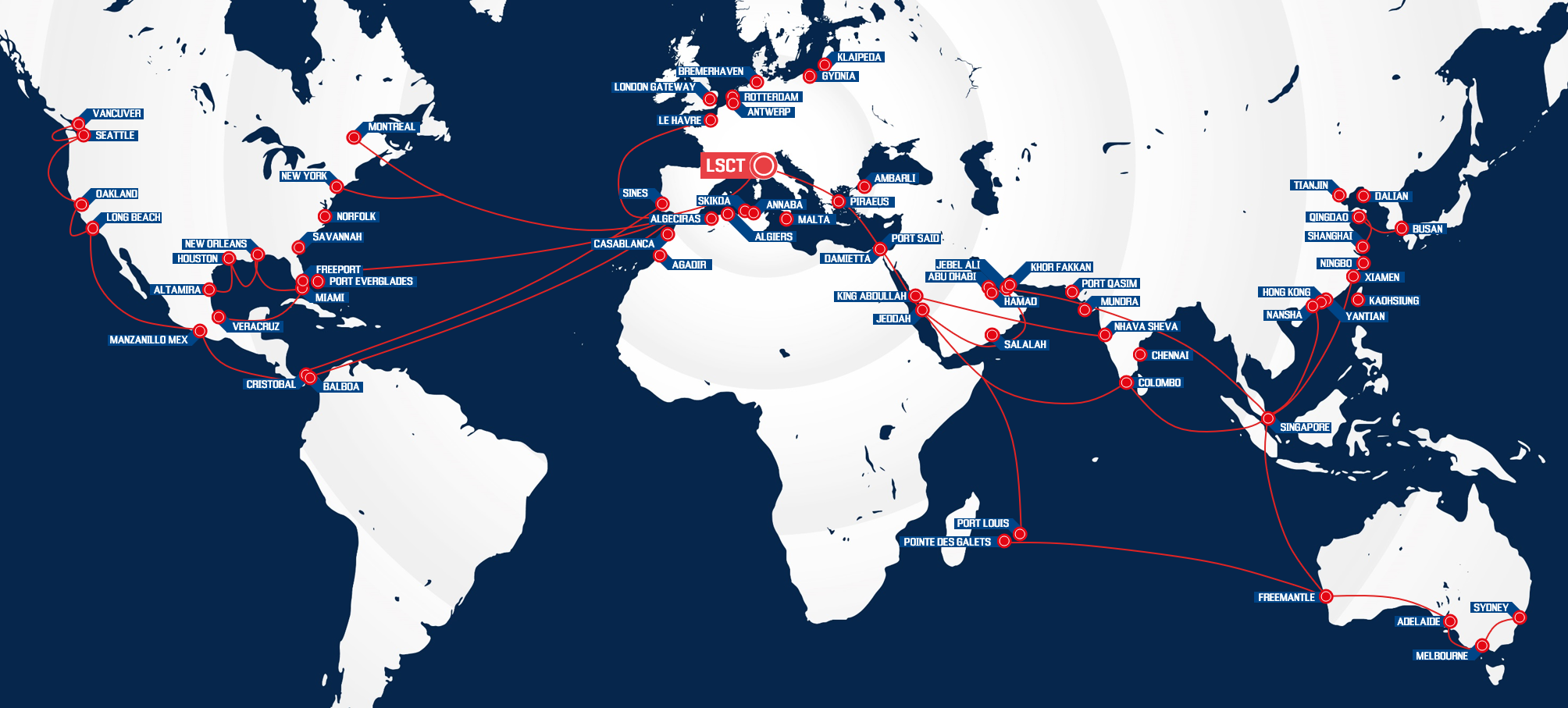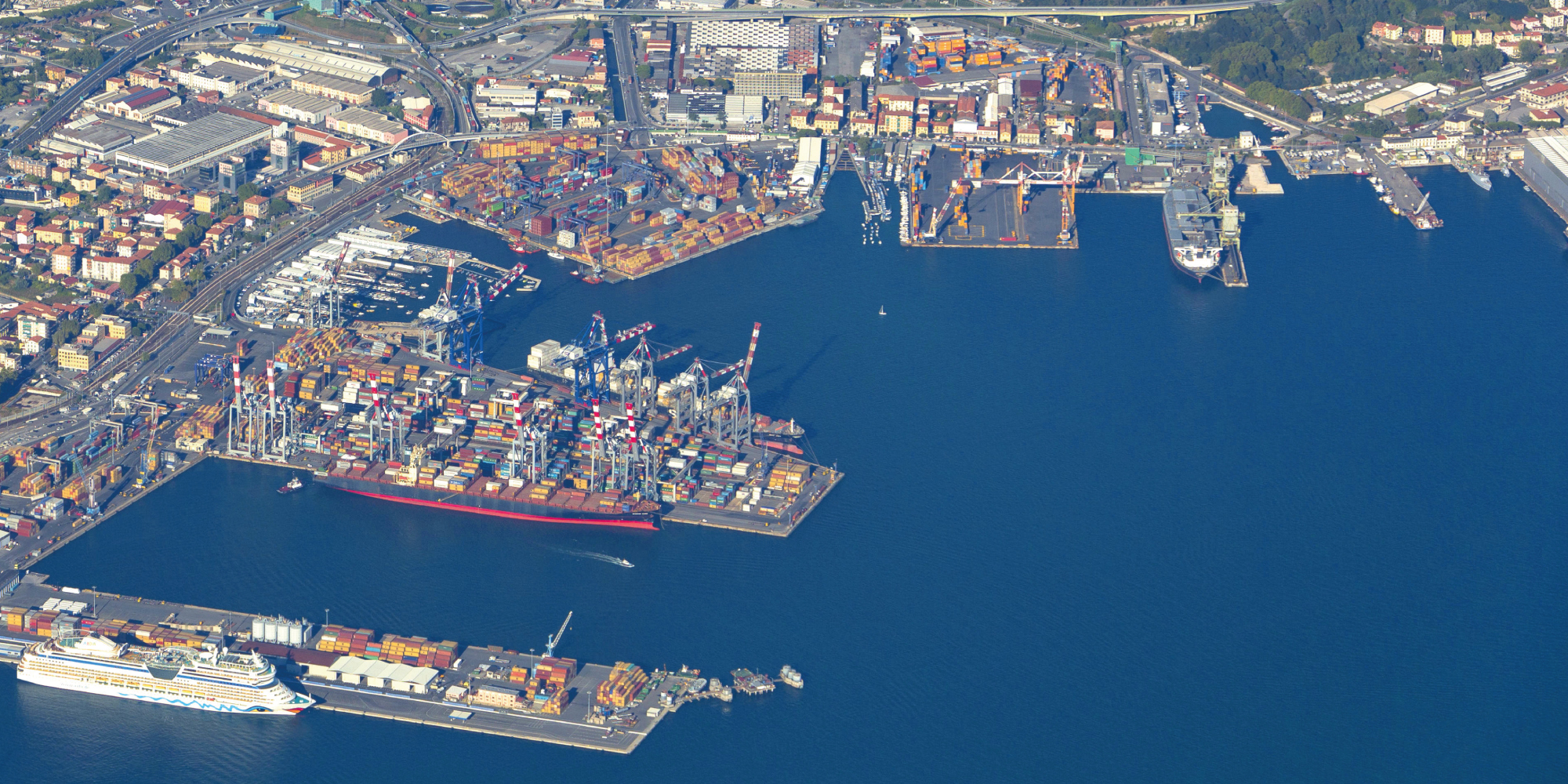La Spezia Container Terminal is the main terminal of the Port of La Spezia and was the first privately managed Italian terminal, born in the early 1970s, specializing in the handling of containerized goods, pioneering the integration of rail connectivity and intermodal transport.
LSCT covers an area of 300,000 sqm, with an annual handling capacity of 1,400,000 TEU, ranking it high among the main Italian container terminals.
In addition to its core activity, LSCT includes a wide range of value-added services including stuffing and unstuffing of containers, break bulk shipments and project cargo management.
 Evolution of the volumes handled at the LSCT terminal 2001-2019. Figures in TEU
Evolution of the volumes handled at the LSCT terminal 2001-2019. Figures in TEU
The organic growth in volumes, combined with the need to effectively respond to market requirements, has led the Contship Italia group to draw up an ambitious investment plan which, in the coming years, will shape the development of the terminal.

Customers and markets served
LSCT allows customers to access the markets of Northern Italy and Central, Southern Europe leveraging on its strategic geographical position and the deep-sea services operating along the main import-export maritime trade-lanes, connecting the Mediterranean with Asia and the American continent.
Amongst the customers of LSCT are all the major global shipping lines, organized under the three main alliances (2M, THE Alliance, Ocean Alliance), which alone represent over 90% of the shipping market in terms of hold capacity.
The terminal's domestic catchment area includes Piedmont, Lombardy and the North East regions, as well as Tuscany and Emilia Romagna. With its international scope, the terminal's catchment area also extends to Switzerland, Austria and Southern Germany thanks to the network of rail services available at Rail Hub Milano (RHM), which is directly connected to LSCT via a high-frequency rail link managed by Hannibal, the Group's multimodal transport operator. The availability of a wide range of daily rail services to the main South European logistics hubs, in turn allows containers to be transported to/from international destinations in a few days.
Thanks to this integrated intermodal system, the port of La Spezia has progressively nurtured its position as a national gateway, offering dedicated access to the markets beyond the Alps and contributing significantly to the development of the "Southern Gateway" system, an alternative access route to regions of central and southern Europe.
Connections and infrastructures
Maritime connections around the world
All the major Alliances and Lines offer services calling La Spezia Container Terminal, which is ideally located to serve the main East West trade lanes, with all three main Network Alliances covering the Asia-Med routes with weekly services.
As well as the Far East, LSCT is also connected with all three coasts of North America as well as Central America. Covering the US East Coast is the service jointly operated by THE Alliance members Hapag-Lloyd, ONE, Yang Ming together with the Ocean Alliance members of CMA CGM, COSCO/OOCL and ZIM Line, connecting ports in the West Med with New York, Norfolk, Savannah and Miami.
The US & Canada West Coast is covered by MSC’s California Express service, linking LSCT with Long Beach, Oakland, Seattle, and Vancouver, including calls in Mexico (Ensenada, Manzanillo) and Panama (Rodman, Cristobal).
Finally, the US Gulf is covered by the 2M network operated by Maersk & MSC connecting LSCT with ports in the Gulf of Mexico, including Veracruz and Altamira in Mexico and New Orleans, Houston, and Miami.
A series of regional European services also calls LSCT with connections to North Africa, East Med and North Europe, including London Gateway, Antwerp, and Rotterdam.
Last but not least, the Australia Express service, a cooperation between MSC and CMA CMG, has one of the longest rotations in the world, connecting Northern Europe and the Mediterranean with ports in Australia (Melbourne, Sydney, Adelaide, and Fremantle) onto Southeast Asia and returning back via the Indian sub-Continent..
Thanks to this important network of maritime services, LSCT is directly connected to the major ports of the five continents, with the only exception of South America, however reachable from La Spezia thanks to a wide range of transshipment connections available.

Road connections
The main motorway junction, pivotal in the development of central-northern Italian markets, is the A15, also known as "Cisa". This 100 km long ‘autostrada’ connects La Spezia directly to the A1, the main Italian road artery, offering quick access to Emilia Romagna and other regions of Northern Italy.
Connectivity to the national motorway network is via the A12, one of the main Italian road arteries. Starting from Genoa, the picturesque highway unwinds through the eastern arch of the Ligurian region continuing into Tuscany and Lazio.
The railway: LSCT's flagship
What gives LSCT the most pride and competitive advantage is its rail connectivity, with up to 180 trains operating each week, offering connectivity with the main rail hubs of Northern and Central Italy.
One of the most important connections is the one between La Spezia and Rail Hub Milano in Melzo, running two to three times a day. The link, operated by Hannibal, the multimodal transport operator of the Contship Italia Group, acts as a conveyor belt to the port, providing logistical synergy and an intermodal platform for further domestic and international connections. It allows LSCT to be connected with the intermodal centers of Segrate (Milan), Dinazzano and Rubiera (Reggio Emilia and Modena), Padua, Bologna and their key industrial districts.
Such an integrated connectivity has resulted in less trucks on the road, as 33% of all import and export containers handled in LSCT moves via rail. This ranks LSCT as the number one gateway port in Italy in terms of percentage of containers moving in/out the terminal by rail. Such strong performance is driving the ambition to achieve even more, with Contship Italia targeting 50% of all container moves by rail, once the future development of the terminal and its infrastructure is completed.
Quayside equipment
The shipside operations of the LSCT terminal involve two main berths, Fornelli Est and the Fornelli West piers, that provide the terminal with the capacity to manage the simultaneous berthing of two 14,000 TEU ships.
The Fornelli East pier has a deeper draft and is equipped with 5 ship-to-shore (STS) gantry cranes, capable of operating on latest generation ships with 23 rows across, whilst Fornelli West offers 6 STS cranes, four of which can work 20 rows across and two can work 18 rows across.
Customers who choose La Spezia Container Terminal, whether they are shipping lines, freight forwarders, shippers or receivers, know they can rely on an agile and efficient terminal, strategically located and equipped with the infrastructure and connectivity necessary for managing the modern supply chain. The added value comes from the team of professionals who manage the terminal, combining decades of experience with a strong drive for innovation, commitment to offering service excellence in support of the Italian and European importers and exporters.




.jpg)